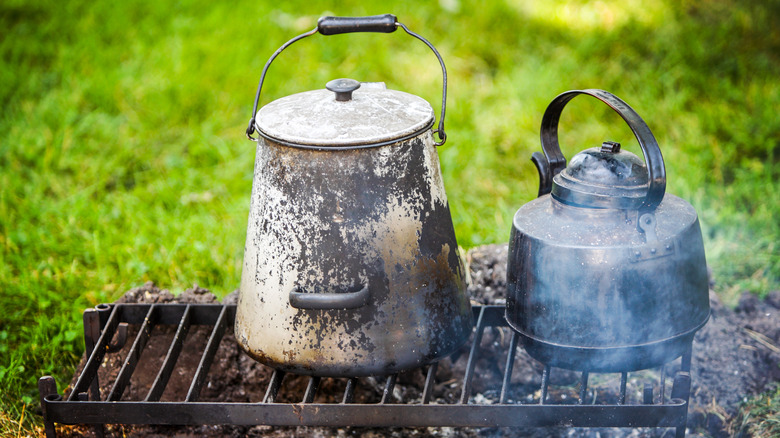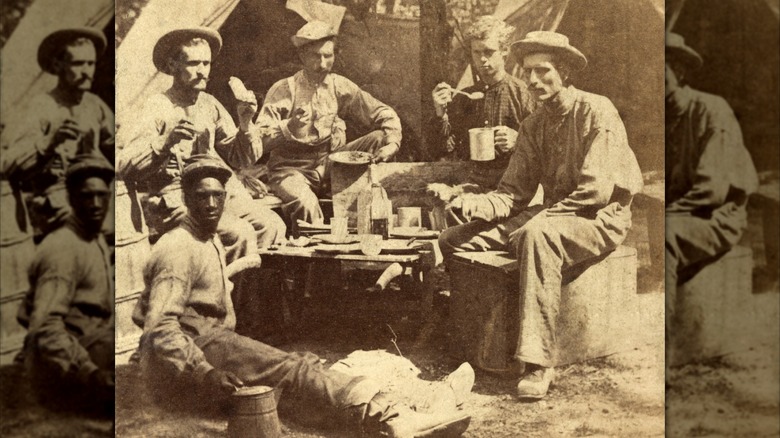How Coffee Divided The North And South During The Civil War
POV: You're a Civil War soldier (Union or Confederate, it doesn't really matter) marching through an endless swamp wearing a sweat-soaked wool uniform on your way to some unspecified place where strangers will be trying to shoot you. You finally stop for a break, and what's the first thing on your mind? A good cup of coffee, or even a bad one.
According to the American Battlefield Trust, in period diaries, the word "coffee" occurs far more often than the word "war." Coffee, after all, was perhaps the only bright spot in a day where your meal — that you had to prepare – might consist of little more than hardtack (a nearly indestructible cracker that's just as tasty as it sounds). Both sides held coffee in high regard, but the main difference between the two was that the Northern troops were more often "haves" while the soldiers from the South were "have-nots."
At the beginning of the war, coffee rations were issued to both the Union and Confederate armies. Pretty soon, however, the blockade of Southern-held ports made it very difficult to import coffee, with the result that this staple item soon became a luxury. In March of 1861, a pound of coffee cost $1.20, but by February of 1865, the price had soared to $196, according to the American Battlefield Trust. (And we thought today's coffee price increases were rough!) As a result, the Confederates often had to make do with inadequate coffee substitutes while their Union counterparts were still able to enjoy their daily java. Knowing what we know now about coffee's energy-increasing powers, could this have been one of the reasons why the South lost the war?
Both sides had to put up with dubious alternatives
When coffee became scarce, Confederate soldiers would use their ingenuity to get hold of Northern coffee rations any way they could. Every so often, the boys in blue could be persuaded to trade a portion of their coffee for tobacco, which is something the gray coats had in abundance because tobacco is a product of the Southern states. At other times, they'd take it off any prisoners of war they managed to detain, while there were even instances where they'd scour abandoned Union campsites in hopes of picking up a stray coffee bean or two. Most of the time, however, they were forced to concoct substitutes made from whatever they could scavenge.
Roasted chicory root was probably the best of these alternatives, since chicory coffee remains a New Orleans specialty today. Other Confederate coffee swaps that haven't stood the test of time include acorns, barley, beets, corn meal, cotton seeds, dandelions, okra seeds, peanuts, peas, persimmon seeds, rye, sweet potatoes, and wheat.
Had they but known, those Southern soldiers may have found some consolation in the fact that some Union troops had to deal with a disgusting coffee alternative called Essence of Coffee. It was made from evaporated coffee combined with milk and brown sugar into a sludgy mess. Not only was this product unpopular due to its flavor, which was probably even more abysmal than that of the worst brand of instant coffee you can buy today, but it also caused serious digestive issues. Certain Civil War-era food items, such as Van Kamp's pork and beans, Borden's condensed milk, and Necco wafers, are still with us; needless to say, Essence of Coffee isn't among them.

